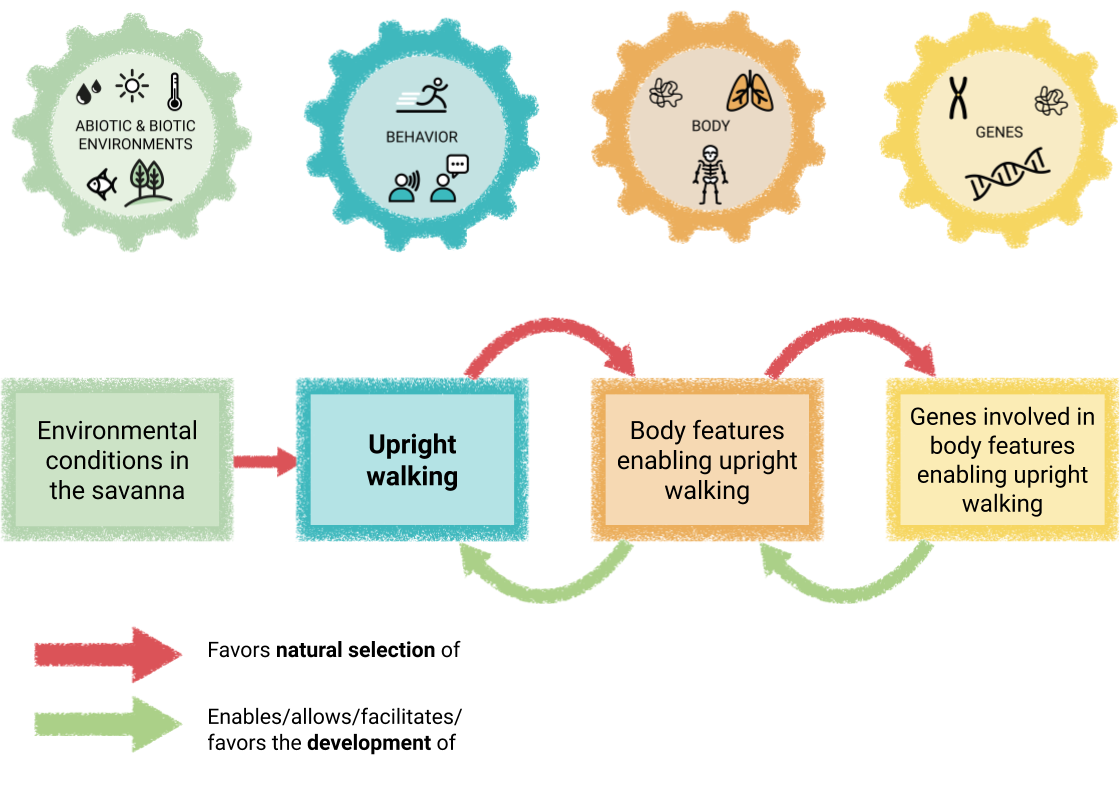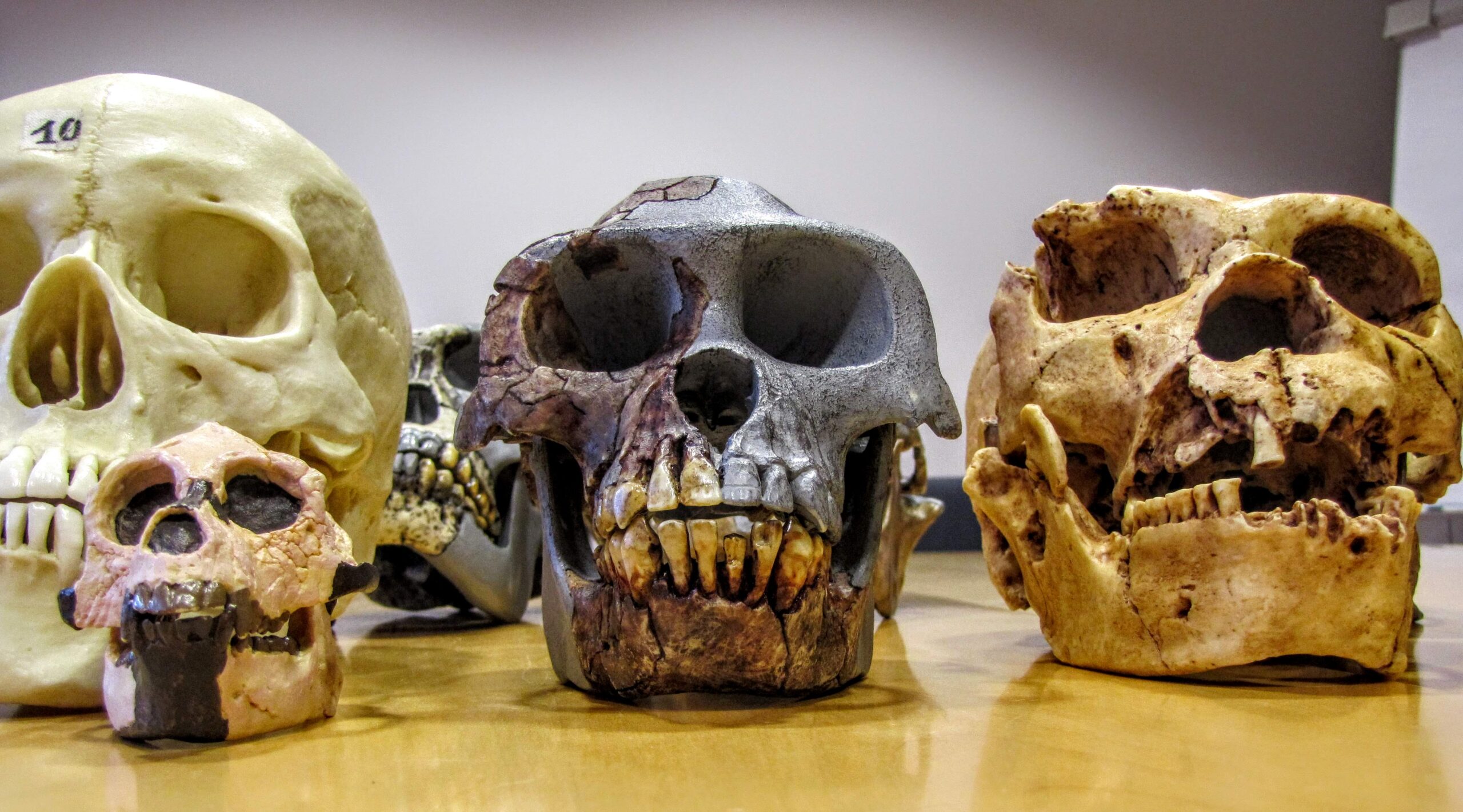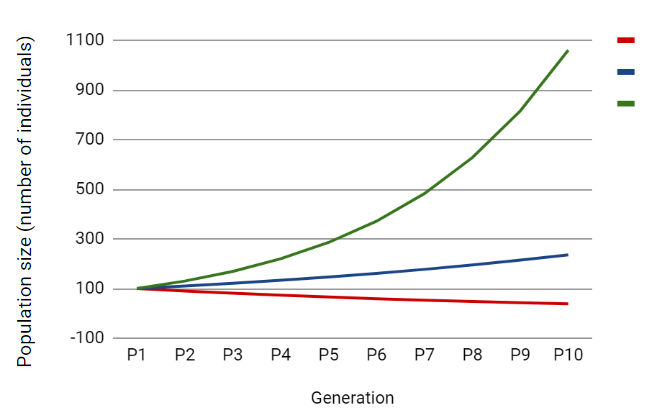
Chalkboard materials: Causal map on upright walking
Chalkboard materials for constructing a causal map for the evolution of upright walking
The resources in this document can be used in a lesson on the evolution (and development) of the human trait of upright walking, also covering basic concepts in evolution such as natural selection, trait variation, fitness, inheritance. You may combine and integrate elements with your existing classroom materials and other available resources regarding adaptations to upright walking (such as textbook sections, images of skulls and skeletons).
Emphasis is on understanding the interactions between behavior, body features, genes, brain function as well as abiotic, biotic and socio-cultural environmental factors in the causation of this phenotype.
Author: Susan Hanisch

Chalkboard materials for constructing a causal map for the evolution of upright walking

A handout that introduces students to the causal map to map the evolution and development of traits, with the example of upright walking

Human Evolution Resources Hominins The Hominini include all members of the lineage that separates us from our closest relatives, the chimpanzees. The only surviving species

Information and teaching materials on the evolution of upright walking in our species

A worksheet in which students calculate and graph the changes in the frequencies of traits related to upright walking in a population over several generations, exploring the role of variation, fitness consequences and trait inheritance in evolutionary change.
OpenEvo is an educational innovation project from the Department of Comparative Cultural Psychology at the Max Planck Institute for Evolutionary Anthropology.
Evolve the future of education with us!